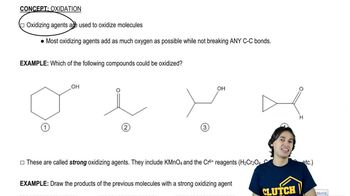Predict the product of the following reactions.
(b)
 Verified step by step guidance
Verified step by step guidance Verified video answer for a similar problem:
Verified video answer for a similar problem:



 2:03m
2:03mMaster Why do we need to convert Alcohol into a good leaving group? with a bite sized video explanation from Johnny
Start learning